

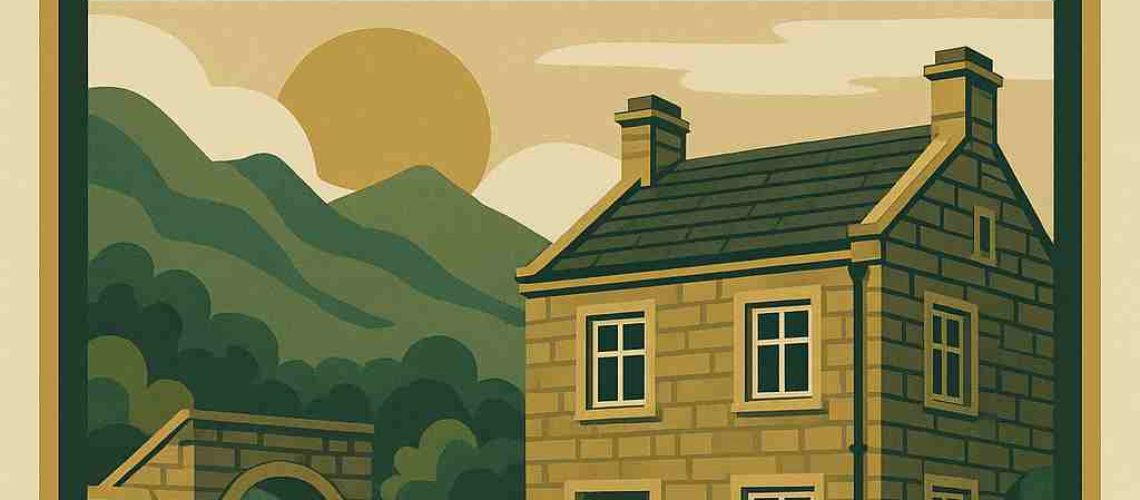
The Peak District National Park is a living tapestry of natural beauty intertwined with centuries‐old architectural charm. Whether you’re renovating an idyllic farmhouse, restoring a stone cottage, or repairing an ancient barn, planning permission in this protected landscape is a delicate process. At Tuscan Foundry, we’ve helped countless homeowners and conservation professionals traverse this journey, matching conservation ethics with practicality, especially when specifying traditional cast iron rainwater goods.
In this guide, we explore:
A “listed building” is officially recognised for its historic or architectural interest, thereby meriting national protection. The system in England, including the Peak District, comprises three grades:
In the Peak District, listing status is determined by Historic England and is not confined to grand country houses—it encompasses humble cottages, agricultural buildings, and even infrastructure such as bridges. The key is to treat all listed structures with respect for their age, character, and authenticity.
When outside the modern envelope of a building, any change is scrutinised during the planning process. Conservation officers aim to preserve the architectural identity of the structure and its surroundings, applying principles such as:
For example, replacing PVC downpipes with traditional cast-iron overflows can significantly improve the appearance and align with National Park design guidelines. Conversely, installing plastic guttering on a 17th-century barn risks refusal unless it is camouflaged or concealed, which is rarely acceptable.
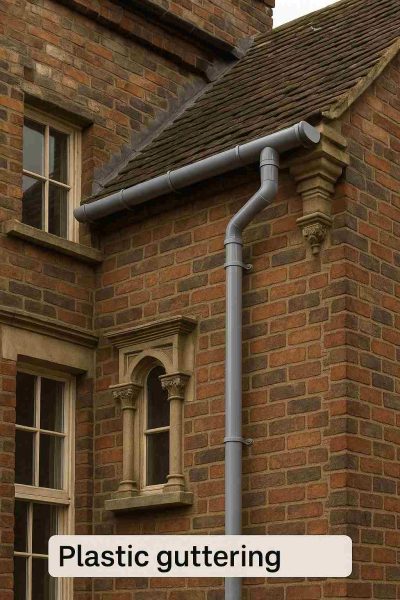
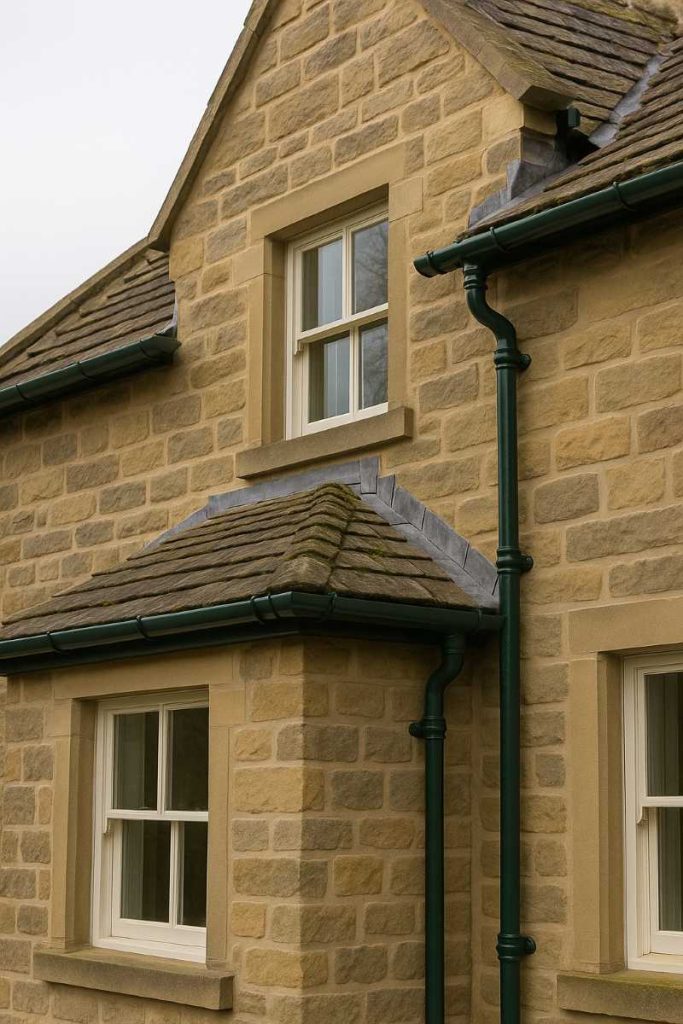
Cast iron has remained the go-to material for rainwater drainage for many compelling reasons:
Cast iron replicates the deep profiles and mouldings once crafted by hand. Its weight and shadows accentuate fine detailing—unlike slim, cheap plastic alternatives.
Properly finished cast iron can last over a century. HDPE/PVC systems must be replaced every 15-20 years and are prone to degradation due to UV and temperature stress.
From life cycle costs to eventual recyclability, cast iron outperforms new plastic versions. Made from foundry-grade recycled steel, rust can be controlled with mature finishing techniques.
Because cast iron preserves the historic character intrinsic to conservation areas, it’s often a condition in planning approvals. Using it prevents delays and ensures compliance.
These reasons align with both practical considerations and regulatory demands for heritage-sensitive design.
At Tuscan Foundry, we’ve proudly partnered with homeowners, conservation architects, and local authorities to deliver sympathetic, compliant solutions. Our work in the Peak District includes:
Our approach blends craftsmanship with regulatory navigation. Where one client encountered resistance due to an ill-matched gutter profile, we stepped in, provided a visually accurate cast iron alternative, and secured swift approval, with much fewer revision rounds.
Here are five iconic structures in the region, each illustrating how care and context informed their restoration:
Dating from the late 16th century and revitalised by the 4th Duke of Devonshire in the 17th and 18th centuries, Chatsworth is not only a jewel of Baroque architecture but also an intricate collection of ancillary buildings. Once generation-old cast iron rainwater goods were replaced with precise hand-painted replicas to preserve the integrity of its riverside façades.
Built in 1671, Eyam Hall is a compact, well-preserved hall house. Renovations in the 1980s included the reinstatement of cast-iron downpipes, as documented in matching archival photos. Today, these glints from the stone elevations are modest in scale but vital in preserving character.
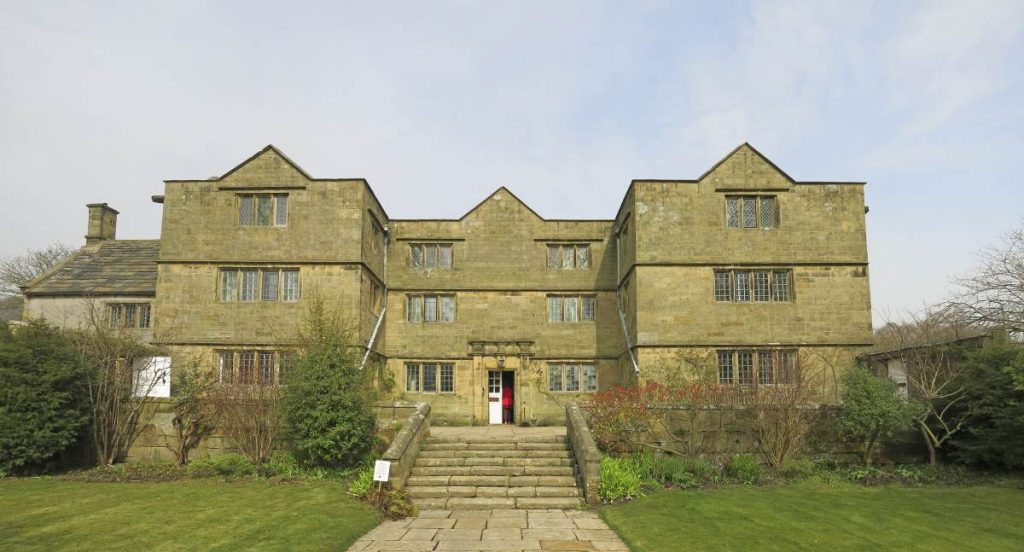
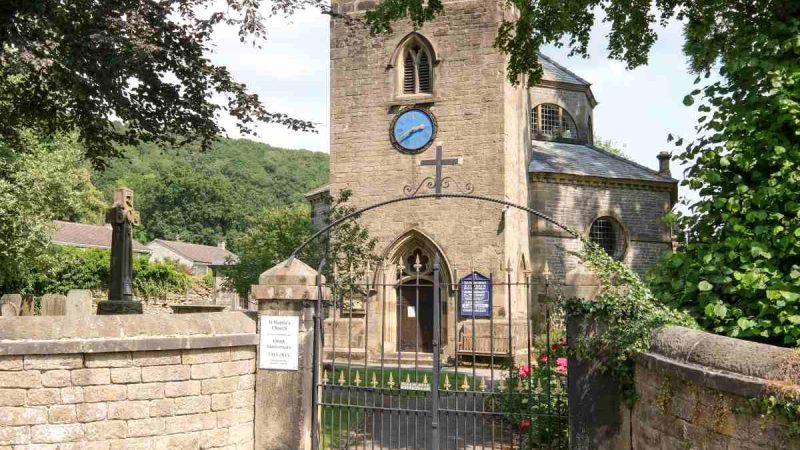
This 13th-century church is characterised by its distinctive stone buttresses and slate roofing. In the 1990s, traditional cast iron gutters were installed as part of a structural restoration project. They offer both robustness and visual consistency, featuring Victorian elements.
This 17th-century timber-framed cottage in Bakewell’s conservation area underwent an innovative approach in 2018: bespoke cast iron hopper heads were installed to capture roof water and divert it to a subterranean soakaway, thereby preserving the cottage’s charming eaves and preventing driven rain from impacting the fragile stone walls.
A medieval packhorse bridge near Stanage Edge, restored in 2007. Although small, restoration crews coated its perimeter stonework with limewash and added cast‑iron scupper channels to direct water off the deck without damaging the parapets.
Here’s a step-by-step look at what your planning journey might involve:
By combining craftsmanship with strategic planning, you safeguard both your property and the cultural landscape of the Peak District.

At Tuscan Foundry, we’re passionate about preserving the authentic heritage of the Peak District. By using traditional cast iron rainwater goods and adhering closely to conservation protocols—and working hand-in-hand with local conservation officers—we ensure that your historic property retains its original charm while performing reliably for generations to come.
Our dedication doesn’t stop at supplying high-quality products; we also offer expert-led site survey visits throughout the Peak District. These visits allow our heritage advisors to assess each property’s unique features and conditions first-hand. From gauging the architectural style to understanding drainage requirements and structural considerations, we gather precise data to recommend the most appropriate solutions tailored to each project. Whether it’s replicating bespoke gutter profiles, estimating flow rates, or navigating listed building consent, our surveys provide the foundation for informed and sensitive restoration work.
With careful planning, regulatory compliance, and craftsmanship rooted in tradition, you can protect your home’s past while securing its future. Trust Tuscan Foundry as your partner in heritage conservation—because every detail matters when it comes to preserving the Peak District’s timeless beauty.